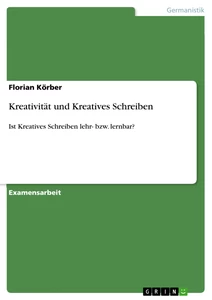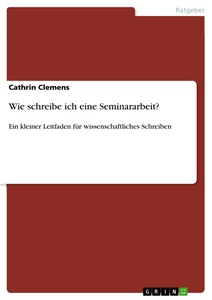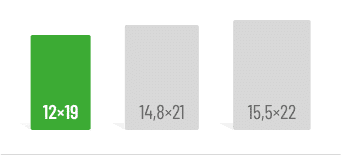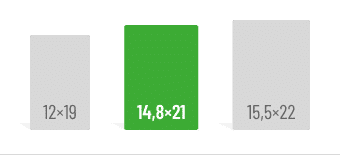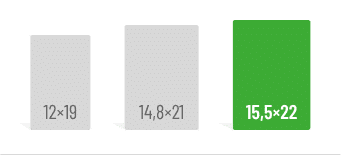First things first:
- Yes, academic writing can be learned!
- A clear and understandable text uses simple sentences, follows a logical structure, and is concise yet illustrative.
- Avoid colloquial language, subjective statements, a narrative writing style, and empty phrases that add no value.
The foundation of any academic paper is a coherent and clear justification of its theses and arguments. While convoluted sentences and passive constructions may be grammatically correct, do they truly contribute to a pleasant reading experience? In your seminar paper or thesis, your goal should be for your readers—especially your professors—to understand your words immediately.
Admittedly, some students find this easier than others. Do you belong to those who spend hours laboring over a single sentence, find writing exhausting, or feel nervous before starting any written assignment? Do the requirements—like tight deadlines, performance pressure, or minimum word counts—make you anxious? If so, don’t worry: we’ve gathered a few tips to help you improve the flow of your writing and make your text more reader-friendly.
What makes a text understandable?
Psychologists Reinhard Tausch, Inghard Langer, and Friedemann Schulz von Thun have analyzed what makes a text easy to understand. In their book “Making Yourself Understood”, now in its 10th edition, they identify the following key characteristics:
- Simple Sentences: Avoid using too many technical terms whenever possible. Instead, opt for concrete and familiar words. If you must use uncommon terms, explain them — ideally in a dedicated section where you define key concepts. Use short sentences and steer clear of excessive subordinate clauses.
- Logical Structure: Ensure that the internal and external structure of your text work together seamlessly. Maintain a clear thread throughout your writing, with sentences logically building on one another. Use formatting to emphasize this structure by incorporating paragraphs, subheadings, and highlights.
- Conciseness: Strike a balance between overly short sentences and overly elaborate, convoluted ones. Clearly articulate your ideas and get straight to the point. If you’re unsure, feel free to rephrase the same idea elsewhere in the text—but use repetition sparingly. Also, avoid unnecessary sentences: don’t include content that isn’t relevant to the topic or is already evident from the context.
- Clarity: Avoid presenting your arguments in an overly dry manner—use examples to make them more engaging. However, use examples sparingly and ensure you don’t lose sight of the main thread of your argument.
You might also be interested in these articles:
A few key features of academic writing
In academic writing, technical terms and specialized vocabulary convey specific information relevant to a particular field of study and are generally well understood by scholars in that field. Since these terms are usually very precisely defined, you should avoid replacing them with alternative expressions. However, be sure to use them in the correct context — and avoid overloading your text with jargon in every other sentence. Excessive use can make your writing clunky and difficult to follow. Keep this golden rule in mind: what you write will also be read. Your professors are not just evaluators; they’re also readers. This means that, despite the importance of linguistic precision, you should never neglect the readability of your text.
Academic writing also requires avoiding colloquial language, as it can come across as unprofessional. This includes filler words like “somehow” or “maybe,” and phrases such as “I believe” or “I assume.” Implicit judgments should also be avoided, as they often unintentionally find their way into the text (often through filler words), for example, with expressions like “unfortunately,” “regrettably,” “fortunately,” and similar terms.
Additional Guidelines to complement the four points above
- Academic writing focuses on rational explanation and discussion, centering on the subject matter, the investigation, and the presentation of findings. Language serves as the tool through which knowledge is communicated.
- The first rule should always be: linguistic accuracy (spelling and grammar) and clarity.
- Academic writing is objective, precise, unambiguous, and accurate, and it is characterized by brevity and conciseness.
- Always ask yourself during the writing process: Who am I writing for? It can be helpful to imagine that you are writing for fellow students, aiming to convey your findings in a precise, yet clear and engaging way. Your professors will also appreciate a well-structured and readable paper.
- Stay objective. However, this doesn’t mean you can’t take a stance on the academic positions of other authors. The key is to ensure that your position is well-reasoned and not based on personal feelings.
- Avoid:
- subjective statements, as they are not comprehensible to the readers. Often such evaluations are explicitly or implicitly unconsciously included in the text.
- a narrative or reporting style.
- Metaphors. The excessive use of metaphors quickly comes across as unscientific and imprecise (while they can make it easier to understand the text, they can also lead to misunderstandings).
- empty sentences, phrases and transitions.
Concrete tips: What really helps you improve your reading flow
- Read your text aloud to yourself: Do you find yourself stumbling over certain parts? If so, it’s likely that a sentence is too long and needs to be shortened.
- Use all the possibilities of punctuation: colons or dashes are good for highlighting your ideas.
- Use at least two to three paragraphs per page: A wall of text that is not interrupted every now and then offers no clues to the eye.
- Pay attention to good transitions: It ensures a smoother reading flow if you don’t start new points incoherently, but lead your readers to the next thought with a smooth transition.
- Frame your working title as a question: This will remind you of what you want your argument to be about, and you’ll avoid losing sight of the actual topic.
- Use synonyms: Alternating wording keeps a text alive. You can find several synonym dictionaries and thesauri on Google that can help you. However, be careful with technical terms, as synonyms can easily distort the meaning.
What to do when you have writer’s block?
You have the idea, the topic is exciting, and you’ve got a few free days ahead of you, ready to write with high motivation—but the words just won’t come, and you can’t seem to get started? You’re not alone. Anxiety, time pressure, and internal resistance cause short- or even long-term writer’s block for many students.
But don’t worry — there are ways to overcome this. The most important thing is not to put too much pressure on yourself, as creativity cannot be forced. Check out our article Writer’s Block: 8 Tips to Overcome Writing Hurdles for more insights. Here are some proven methods:
- Distract yourself: This might sound simple, but it often works. If your Word document stubbornly remains blank, do something else—cleaning, exercising, listening to music, or watching a series. Often, the breakthrough idea or the perfect phrasing comes when you least expect it.
- Write a few paragraphs by hand: How long has it been since you last wrote long texts in the classic way with a fountain pen or ballpoint pen? Exercise alone can give your thoughts new momentum.
- Move your body: When walking, jogging or during other steady sporting activities, your circulation is stimulated and your ideas can unfold better than at your desk at home.
- Explain a complicated issue to a person from outside the field in simple words: In this way, you will think through the topic yourself very carefully and, in the best case, get even more perspectives.
- Use the method of freewriting: Start writing – no matter what – and don’t take off your writing instrument (or move away from your keyboard) for at least 5 minutes. Don’t correct spelling mistakes or expressions, just let your ideas flow. This creative exercise will help you get into a writing routine and organize your thoughts.
Our recommendations:
Sources:
- Langer, Inghard / Schulz von Thun, Friedemann / Tausch, Reinhard: Sich verständlich express, Munich 1999.
- https://schreibberatung-muenchen.de/freewriting-schreibflow-statt-schreibblockaden/
- https://studi-lektor.de/tipps/abschlussarbeiten-faq/schreibblockade-ueberwinden.html
Do you like our magazine? Then sign up for our GRIN newsletter now!
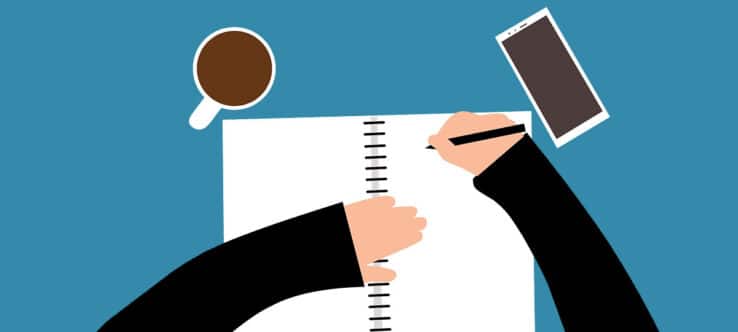



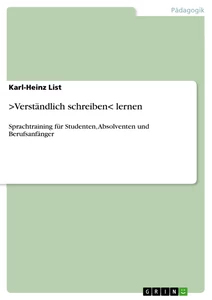 Verständlich schreiben< lernen">
Verständlich schreiben< lernen">